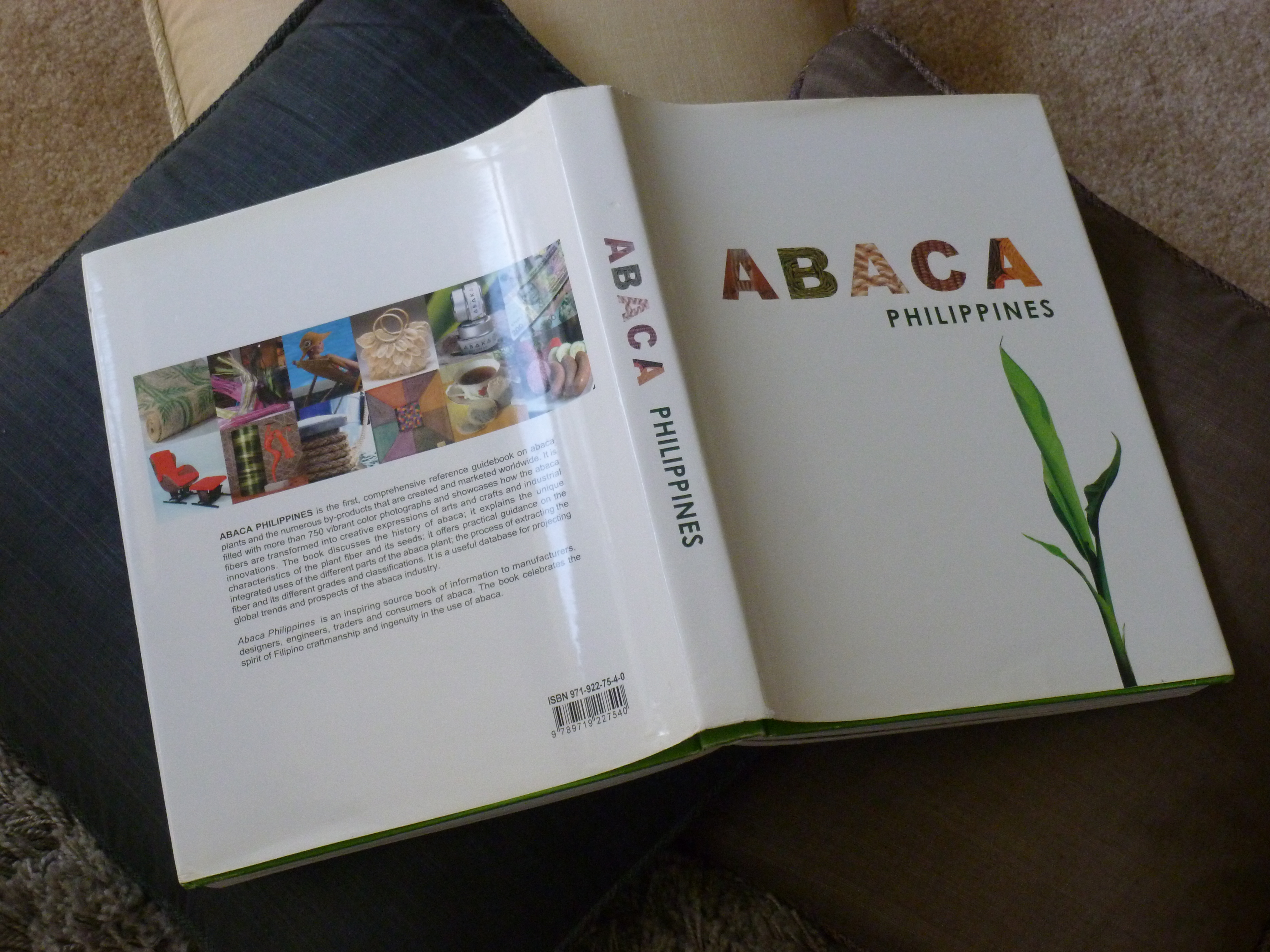Abaca Philippines
Overview
Project:
Book about Abaca plant and its by-products
Title:
Abaca Philippines
Authors:
Lalaine Abonal and Luis R. Villafuerte
Creative Consultant and Book Cover Designer:
Toti Paliza
Project Description:
ABACA Philippines is the first, comprehensive reference guidebook on abaca plants and the numerous by products that are created and marketed worldwide. It is filled with more than 750 vibrant color photographs and showcases how the abaca fibers are transformed into creative expressions of arts and crafts and industrial innovations. The book discusses the history abaca; it explains the unique characteristics of the plant fiber and its seeds; it offers practical guidance on the integrated uses of the different parts of the abaca plant; the process of extracting the fiber and its different grades and classifications. It is a useful database for projecting global trends and prospects of the abaca industry.
ABACA Philippines is an inspiring source book of information to manufacturers, designers, engineers, traders and consumers of abaca. The book celebrates the spirit of Filipino craftmanship and ingenuity in the use of abaca.
About Abaca Plant:
Abaca is indigenous to the Philippines.
Abaca fibers were already being woven into breathable fabrics and made into sturdy sandals in different parts of the Philippines long before the Spaniards came to the Philippines in 1521. The abaca is believed to have evolved in the Bicol region of the Philippines.
Volcanic area like the provinces of Albay and Camarines Sur in the Bicol Region are suited for abaca cultivation. The Philippines’ tropical climate, rich volcanic soils and high to moderate rain fall are particularly appropriate to the growing of the abaca plant.
In 1820, a US Navy lieutenant brought abaca fiber samples to the United States. Soon after, an export shipment of abaca was made to Salem, Massachusetts under the product name of simply “Manila”, since the Philippines was then more known by the name of its capital city, Manila. After the opening of the port of Manila in 1834, the Americans became the largest importer of abaca. The American navy used abaca rope because it had a remarkable tensile strength as it was more resistant to salt water decomposition than most vegetable fibers. In fact, it was and still is the strongest of all natural fibers. These qualities were appreciated by other foreign shipping companies as well.
Up to the late 19th century, there were 12 different varieties of abaca. Each variety has its certain advantageous qualities, depending on its use. Prior to 1915, there was not a definitive standard for grading the Philippine abaca fibers. Standards were introduced in that year and have since been amended several times principally in 1927 and in 1975.
Originally, commercial production of the abaca fiber was confined to the Philippines because abaca is a plant material that is government regulated. In about 1521, shipments of abaca root stocks were introduced into many different tropical countries, including fairly large plantings in Sumatra, Indonesia, in India, Andaman Islands, the West Indies and Central America. Small abaca plantings were also made in Borneo.
By 1925, the US Department of Agriculture officials attempted to grow abaca in the Central American countries of Panama, Costa Rica, Guatemala, and the Honduras by sending a shipment of propagating material of the superior varieties of abaca to said countries. Yet despite some experimental planting and efforts to expand the industry in 1931, 1939 and 1942 in several other central American countries, it remained relatively insignificant. It was only at the end of World War that a Japanese named Furukawa was successful in cultivating abaca elsewhere, in Ecuador.
While other plant materials like seeds and flowers are freely shared among countries. particularly among research centers, the abaca plant is a restricted material and government regulated. Thus, if a country other than the Philippines claims to grow abaca, DNA testing will always trace its origin to the Philippines.
Date






